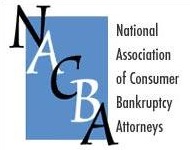Quick: what’s § 554?
It’s the section that allows any party to move for an order compelling the trustee to abandon property. It’s exceedingly useful and underutlized.
Today I’m interested in subsection (b), which reads:
(b) On request of a party in interest and after notice and a hearing, the court may order the trustee to abandon any property of the estate that is burdensome to the estate or that is of inconsequential value and benefit to the estate.
Why abandon assets
While the Code says that property that is exempted leaves the estate, often the fact that the time for filing of objections to claims of exemptions has passed is not sufficient for third parties such as realtors and title companies. In such cases, you find yourself needing a court order that the property in question is no longer property of the estate and subject to the control of the bankruptcy trustee.
I just filed a motion to compel abandonment for clients with an underwater house who are seeking a short sale as an alternative to a foreclosure. The court’s order will make clear to all involved that the debtors are free to deal with the property.
Ignore abandonment at your peril
Another fact pattern where there was no abandonment and a distressing result for debtors is found in Gebhart and Chappell decisions by the 9th Circuit. The real property was not abandoned, the estate remained open, so there was no abandonment pursuant to subsection (c). Post petition appreciation was found to belong to the estate years later.
A third situation where you might want to use §554 is if you are brave enough to file a Chapter 7 for a sole proprietor with a significant operating business. The trustee is often concerned about liability issues surrounding an operating business and will want to promptly abandon an ongoing business. Whip out your motion to abandon, get it on file and noticed, and clear the decks for the debtor to continue with the business.
Image courtesy of oast house archives.









Cathy, I just filed my first motion to abandon and the trustee has responded by citing “Cult Awareness Network, 151 F.3d at 607” and similar cases which hold that a debtor must have standing to appeal estate administration. But I’m not appealing administration, I’m requesting abandonment based on inconsequential value. There’s no case law that I found that requires a debtor show pecuniary interest before being able to file a 554(b) motion, is that right? Seems that this particular trustee’s argument would obliterate any motion to abandon by a debtor. Any words of advice in battling with this trustee?